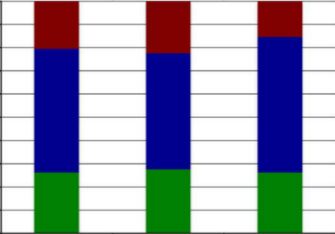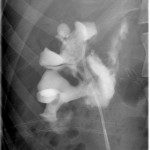Article of the Week: Comparison of systematic transrectal biopsy to transperineal MRI/(US)-fusion biopsy for the diagnosis of prostate cancer
Every Week the Editor-in-Chief selects an Article of the Week from the current issue of BJUI. The abstract is reproduced below and you can click on the button to read the full article, which is freely available to all readers for at least 30 days from the time of this post.
In addition to the article itself, there is an accompanying editorial written by a prominent member of the urological community. This blog is intended to provoke comment and discussion and we invite you to use the comment tools at the bottom of each post to join the conversation.
Finally, the third post under the Article of the Week heading on the homepage will consist of additional material or media. This week we feature a video from Dr. Angelika Borkowetz, discussing her paper.
If you only have time to read one article this week, it should be this one.
Comparison of systematic transrectal biopsy to transperineal MRI/ultrasound-fusion biopsy for the diagnosis of prostate cancer
OBJECTIVES
To compare targeted, transperineal magnetic resonance imaging (MRI)/ultrasound (US)-fusion biopsy to systematic transrectal biopsy in patients with previous negative or first prostate biopsy and to evaluate the gain in diagnostic information with systematic biopsies in addition to targeted MRI/US-fusion biopsies.
PATIENTS AND METHODS
In all, 263 consecutive patients with suspicion of prostate cancer were investigated. All patients were evaluated by 3-T multiparametric MRI (mpMRI) applying the European Society of Urogenital Radiology criteria. All patients underwent MRI/US-fusion biopsy transperineally (mean nine cores) and additionally a systematic transrectal biopsy (mean 12 cores).
RESULTS
In all, 195 patients underwent repeat biopsy and 68 patients underwent first biopsy. The median age was 66 years, median PSA level was 8.3 ng/mL and median prostate volume was 50 mL. Overall, the prostate cancer detection rate was 52% (137/263). MRI/US-fusion biopsy detected significantly more cancer than systematic prostate biopsy (44% [116/263] vs 35% [91/263]; P = 0.002). In repeat biopsy, the detection rate was 44% (85/195) in targeted and 32% (62/195) in systematic biopsy (P = 0.002). In first biopsy, the detection rate was 46% (31/68) in targeted and 43% (29/68) in systematic biopsy (P = 0.527). In all, 80% (110/137) of biopsy confirmed prostate cancers were clinically significant. For the upgrading of Gleason score, 44% (32/72) more clinically significant prostate cancer was detected by using additional targeted biopsy than by systematic biopsy alone. Conversely, 12% (10/94) more clinically significant cancer was found by systematic biopsy additionally to targeted biopsy.
CONCLUSIONS
MRI/US-fusion biopsy was associated with a higher detection rate of clinically significant prostate cancer while taking fewer cores, especially in patients with prior negative biopsy. Due to a high portion of additional tumours with Gleason score ≥7 detected in addition to targeted biopsy, systematic biopsy should still be performed additionally to targeted biopsy.



